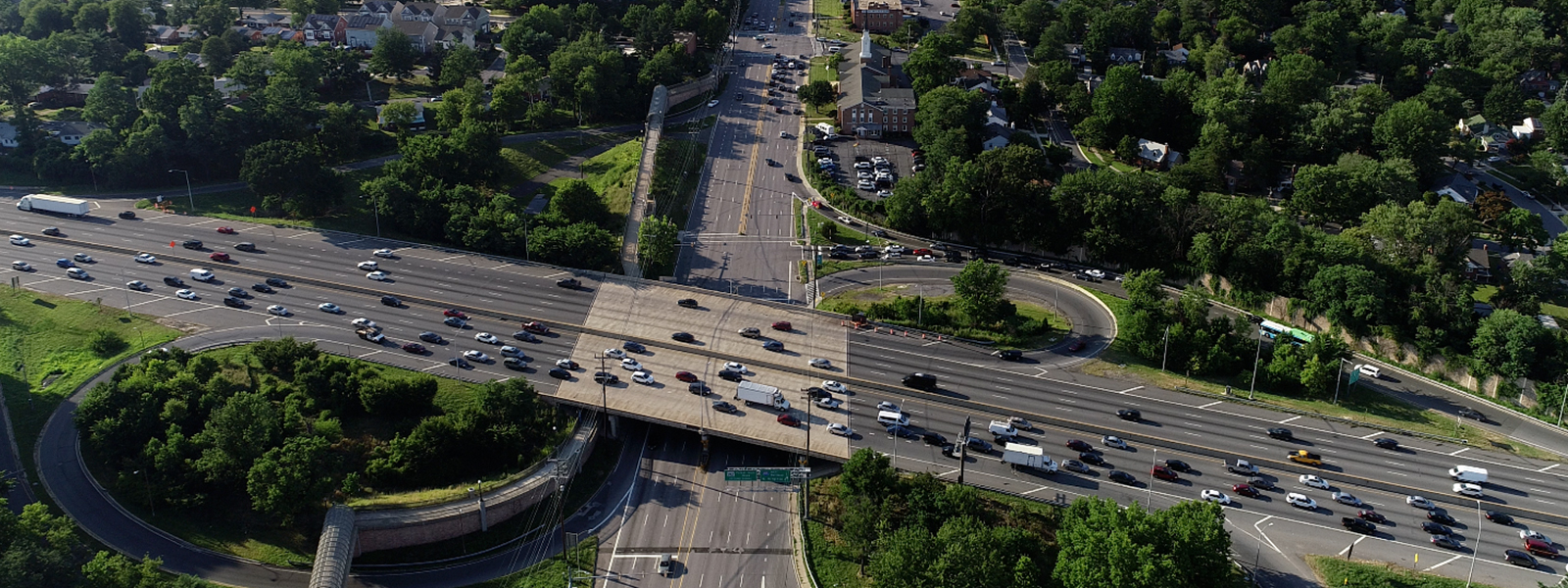
WHEATON, MD – Leaders of The Maryland-National Capital Park and Planning Commission (M-NCPPC) said they have been heard by the Maryland Department of Transportation’s State Highway Administration (MDOT SHA) on the need to include funding for transit and bicycle and pedestrian infrastructure elements in the I-495 & I-270 Managed Lanes Study. This news comes as MDOT SHA announced the selection of the P3 partner, Accelerate Maryland Partners, LLC, to become the developer responsible for overseeing predevelopment work one Phase 1 South portion of the project, which includes the American Legion Bridge to I-370 via I-270. Accelerate Maryland Partners, LLC will also work with MDOT SHA on Phase 1 North, the area extending up to I-70, but no details are available at this time.
Although the inclusion of funding for transit as well as Vision Zero investments as part of this Phase 1 of the project is positive, Commission leaders still have concerns related to the plan process. MDOT SHA is still moving forward on the environmental impact review for the Study’s entire 70 mile stretch of highway, including areas along I-495 that are not approved under this P3 arrangement. M-NCPPC continues to urge the State to consider phasing the project for purposes of issuing its Environmental Impact Statement consistent with the project’s phased implementation. This would allow each phase to be reviewed as the need for improvements, if any, to I-495 east of I-270 becomes clearer based on further study, including impacts of a successful implementation of Phase 1.
MDOT SHA announced last month that the State’s “preferred alternative” version of the highway-widening project would add a total of four high-occupancy toll (HOT) lanes to I-495 and I-270 — two in each direction. M-NCPPC stated earlier this month its concern over the lack of funding for transit in the original proposal since including transit would be the most efficient to commuters and least disruptive to Commission-owned parkland and cultural resources.
“We are pleased that MDOT has heard us and many others on the critical need to include transit funding for this project,” said M-NCPPC and Prince George’s County Planning Board Chairman Elizabeth M. Hewlett. “M-NCPPC remains committed to engaging in a collaborative approach to protect and advance the best in land use and transportation practices with our partners at the state level. We hope that MDOT SHA will continue to engage us on our issues of concern, particularly the need to phase environmental review.”
“We appreciate the inclusion of transit funding, but we still have fundamental issues with the lack of phasing for this project,” said M-NCPPC Vice-Chair and Montgomery County Planning Board Chair Casey Anderson. “It’s important to the residents of Montgomery and Prince George’s Counties that we have assurance for protection of our parkland and cultural resources. As it stands right now, we would have to consider unknown impacts to the entire 70-mile system of the project – and we still have major concerns. We are hopeful that we can work with MDOT to reach a resolution that involves a phased approach for the environmental review that matches the phased implementation.”
According to an MDOT press release, the proposal also includes commitments for transit improvements in Montgomery County, a community grant program, Vision Zero investments, a no interest loan program for local fleet conversions and water quality enhancements. The Accelerate Maryland Partners proposal also includes a comprehensive approach to local workforce development including: partnerships with small, disadvantaged, women and veteran-owned businesses; union and local contractor involvement, including a planned Project Labor Agreement; and engagement with local community organizations and educational institutions.
M-NCPPC also raised a wide range of environmental concerns about the impact of adding lanes to I-495 and I-270, which run through public parks and over streams owned and managed by M-NCPPC. MDOT has said it plans a variety of environmental remediation efforts as part of the project, but the Commission has not been presented with any of the proposed mitigation plans for review.
M-NCPPC was selected by MDOT SHA as a cooperating agency on the I-495 and I-270 Managed Lanes Study. The purpose of the study is to develop a travel demand management solution that addresses congestion, improves trip reliability on I-495 and I-270 within the study limits and enhances existing and planned multimodal mobility and connectivity.
About the I-495 and I-270 Managed Lanes Study
The I-495 and I-270 Managed Lanes Study was initiated by MDOT along I-495 (Capital Beltway), as well as along I-270 (Dwight D. Eisenhower Memorial Highway). Managed lanes consist of a highway facility or set of lanes where operating strategies are used to control the number of vehicles using the lanes at any given time. Any selected build alternative is likely to have significant impacts on parkland and the associated facilities, programs and natural and cultural resources in both Montgomery and Prince George’s Counties as well as on communities in those counties. Learn more about the MDOT SHA Managed Lanes Study. M-NCPPC’s project coordinators for the Managed Lanes Study are Carol Rubin for Montgomery County and Debra Borden for Prince George’s County.
About The Maryland-National Capital Park and Planning Commission
The Maryland-National Capital Park and Planning Commission (M-NCPPC) is a bi-county agency empowered by the State of Maryland in 1927 to acquire, develop, maintain, and administer a regional system of parks within Montgomery and Prince George’s Counties, and to provide land use planning for the physical development of Prince George’s and Montgomery Counties. In addition, the agency gained responsibility for the public recreation program in Prince George’s County in 1970.
The governing body of M-NCPPC consists of 10 members, five appointed by Montgomery County and five by Prince George’s County. The commission coordinates and acts on matters of interest to both counties, and meets at least once a month. The members of the commission from each county serve on separate county planning boards to facilitate, review, and administer the matters affecting their respective counties.